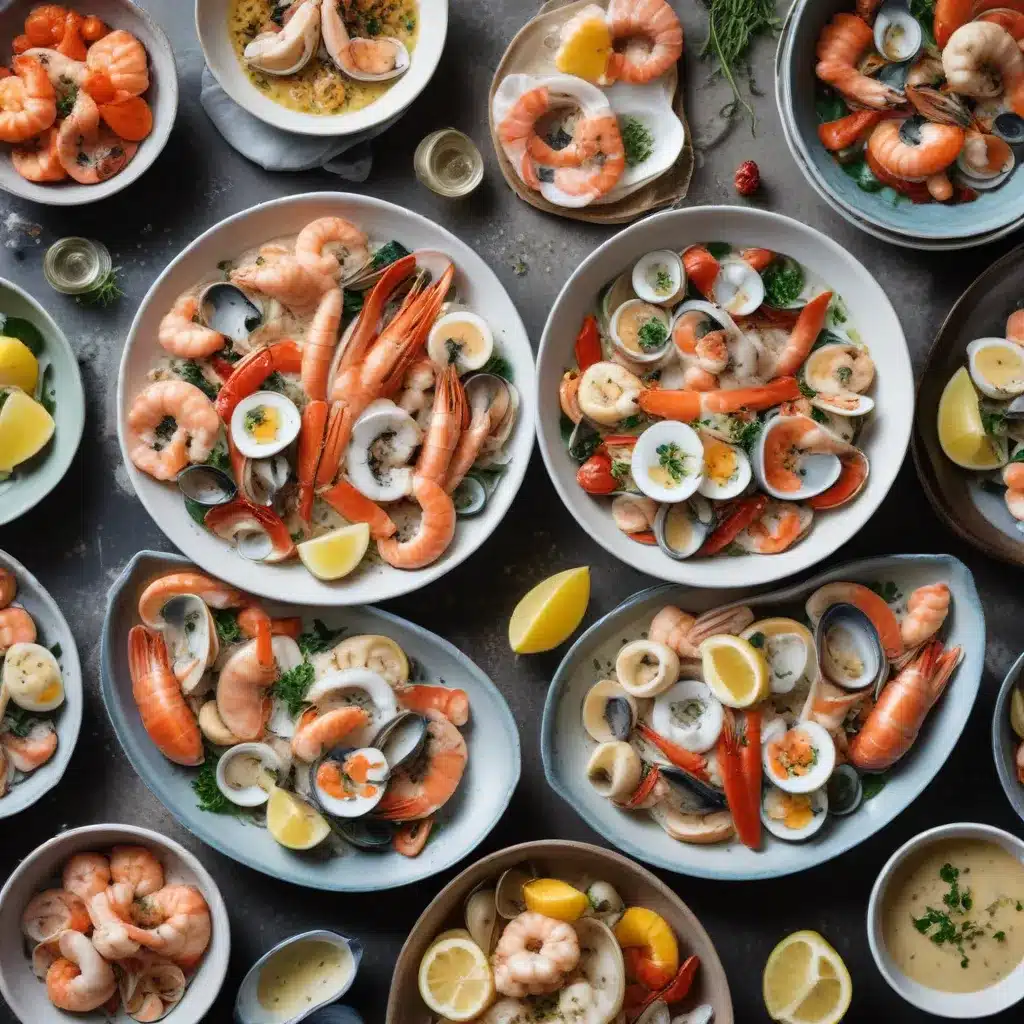
As a seafood dining expert writing for Fish Tales Cafe, I’m excited to share my insights on maximizing the freshness and flavor of your seafood dishes. Whether you’re a seasoned chef or a home cook exploring the wonders of the ocean’s bounty, proper storage techniques are the foundation for culinary excellence.
Seafood Storage Techniques
Ensuring the optimal storage of seafood is crucial for preserving its delicate flavors and textures. For cod, one of the most versatile and popular white fishes, maintaining the right temperature and humidity is key. Store fresh cod fillets in the coldest part of your refrigerator, ideally at 32-34°F (0-1°C). Wrap the fillets tightly in plastic wrap or place them in a sealed container to prevent cross-contamination and minimize exposure to air.
When it comes to frozen seafood, proper storage is equally important. Wrap the fillets or steaks in multiple layers of plastic wrap or freezer paper, ensuring there are no air pockets. Alternatively, you can store them in a resealable freezer bag, removing as much air as possible before sealing. Frozen seafood can be kept for 3-6 months in a home freezer, though the flavor and texture may begin to degrade over time.
Preserving Seafood Freshness
Beyond temperature control, there are several techniques to extend the shelf life of your seafood. Brining, for example, can help cod maintain its moisture and tenderness during storage and cooking. A simple brine solution of salt, sugar, and water can be used to soak the fillets for 15-30 minutes before cooking or freezing.
Another effective method is vacuum sealing, which removes air and creates an airtight environment to slow down the oxidation process. Vacuum-sealed seafood can be stored in the refrigerator for up to a week or in the freezer for several months, preserving the delicate flavors and preventing freezer burn.
Optimal Temperature and Humidity Control
Maintaining the right temperature and humidity levels is crucial for seafood storage. Refrigerators should be set between 32-40°F (0-4°C) to prevent bacterial growth, while freezers should be at 0°F (-18°C) or below. Avoid storing seafood near the door, as this area experiences the most temperature fluctuations.
Humidity is also a critical factor. Ideally, the storage environment should have a relative humidity of 80-90% to prevent the seafood from drying out. Consider using a humidity-controlled storage container or investing in a refrigerator with a built-in humidity control system.
Enhancing Seafood Culinary Experiences
Proper storage is just the first step in creating exceptional seafood dishes. Mastering preparation methods, understanding flavor profiles, and employing thoughtful presentation techniques can further elevate your culinary creations.
Seafood Preparation Methods
Explore a variety of cooking techniques to bring out the best in your seafood. Searing, poaching, grilling, and en papillote (baking in parchment paper) are all excellent options for cod and other white fishes. Experiment with different marinades, rubs, and sauces to complement the delicate flavors.
Flavor Profile Considerations
When pairing seafood with other ingredients, consider the balance of flavors. Cod, for instance, pairs beautifully with bright, acidic notes from citrus, white wine, or mignonette (a classic French sauce made with shallots, vinegar, and cracked pepper). Earthy herbs, such as dill or parsley, can also enhance the natural sweetness of the fish.
Presentation and Plating Techniques
Elevate your seafood dishes with thoughtful plating and presentation. Arrange the cod fillets or steaks with care, complementing the natural colors and textures with vibrant vegetables, grains, or a flavorful sauce. Garnish with fresh herbs, lemon wedges, or a sprinkle of sea salt to create a visually stunning and appetizing dish.
Sustainable Seafood Sourcing
As consumers become increasingly conscious of environmental impact, it’s essential to consider the sustainability of your seafood choices. Look for cod and other fish that are sourced from well-managed, responsibly fished areas, ensuring the long-term health of our ocean ecosystems.
Responsible Fishing Practices
Research the fishing methods used to harvest your seafood, favoring techniques that minimize bycatch and environmental damage, such as line-caught or pole-and-line fishing.
Traceability and Transparency
Seek out seafood providers that offer transparency in their supply chain, allowing you to trace the origin of your cod or other fish. This not only supports sustainable practices but also ensures the highest quality and freshness.
Environmental Impact Awareness
By making conscious choices about the seafood you purchase and prepare, you can contribute to a more sustainable future for our oceans. Educate yourself on the environmental impact of different fishing methods and species, and consider incorporating more plant-based or vegetarian seafood alternatives into your culinary repertoire.
Seafood Dish Composition
Crafting exceptional seafood dishes involves a harmonious balance of flavors, textures, and visual appeal. Thoughtful ingredient pairing, recipe development, and presentation techniques can elevate your culinary creations.
Ingredient Pairing Strategies
Pair cod or other white fishes with complementary flavors that enhance their delicate taste. Consider citrus, herbs, butter, or a touch of spice to create a well-rounded dish. Experiment with gluten-free grains, such as quinoa or farro, to provide a satisfying base.
Balancing Flavors and Textures
Achieve a captivating contrast of flavors and textures in your seafood dishes. Pair the tender, flaky cod with crunchy vegetables, creamy sauces, or a crisp panko or breadcrumb topping. Incorporate acidity to balance any richness and brighten the overall dish.
Recipe Development Approaches
Explore diverse culinary traditions from around the world to inspire your seafood recipe development. Ceviche, a traditional Latin American preparation, showcases the versatility of cod or other white fish. Seafood stews and bouillabaisse, rooted in Mediterranean cuisine, offer opportunities to showcase a variety of sustainable seafood in a single dish.
By mastering the art of seafood storage, preparation, and dish composition, you’ll be well on your way to creating exceptional culinary experiences at Fish Tales Cafe. Remember, the key to elevating your seafood dishes lies in understanding the delicate balance of flavors, textures, and sustainability. Bon appétit!

